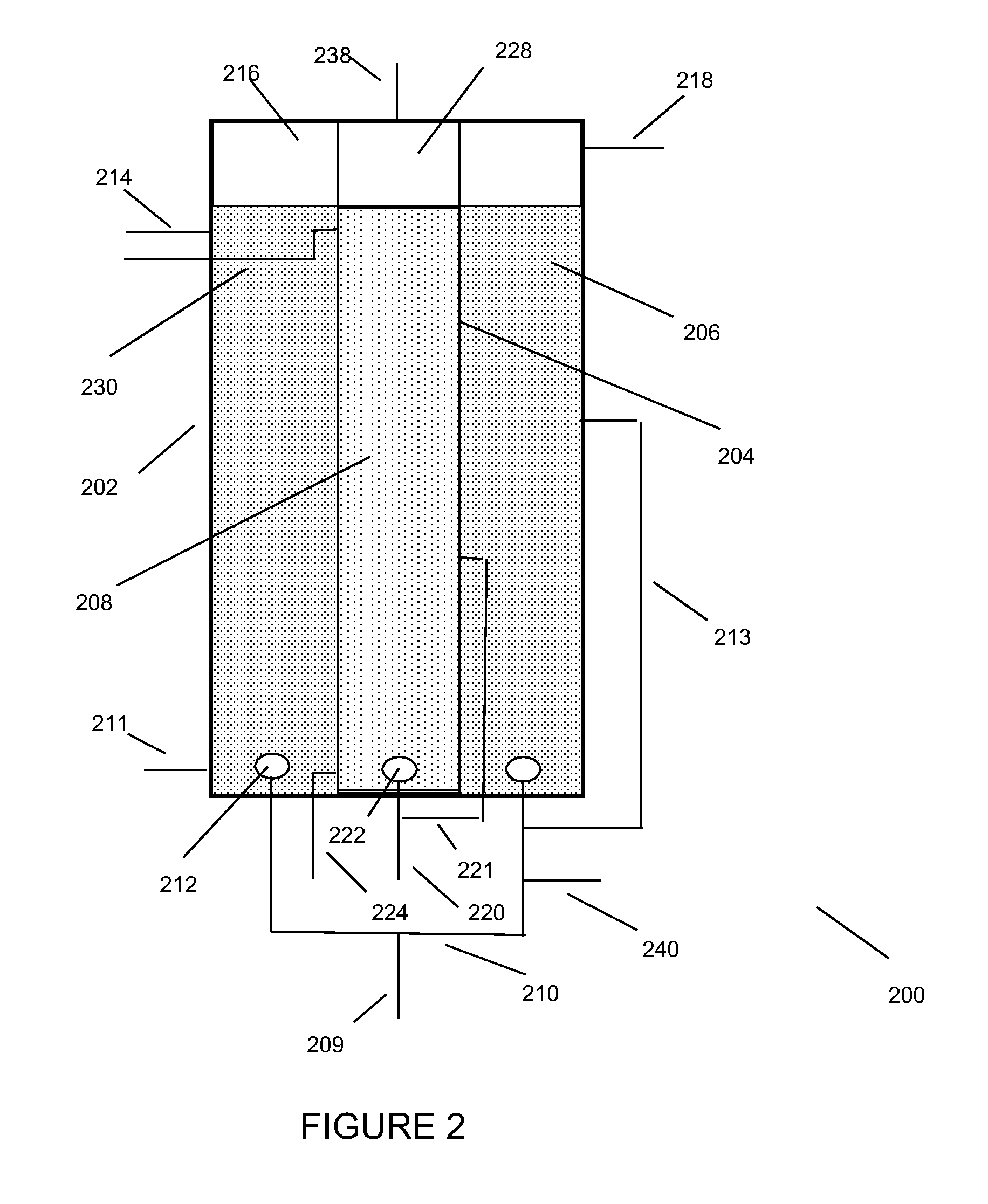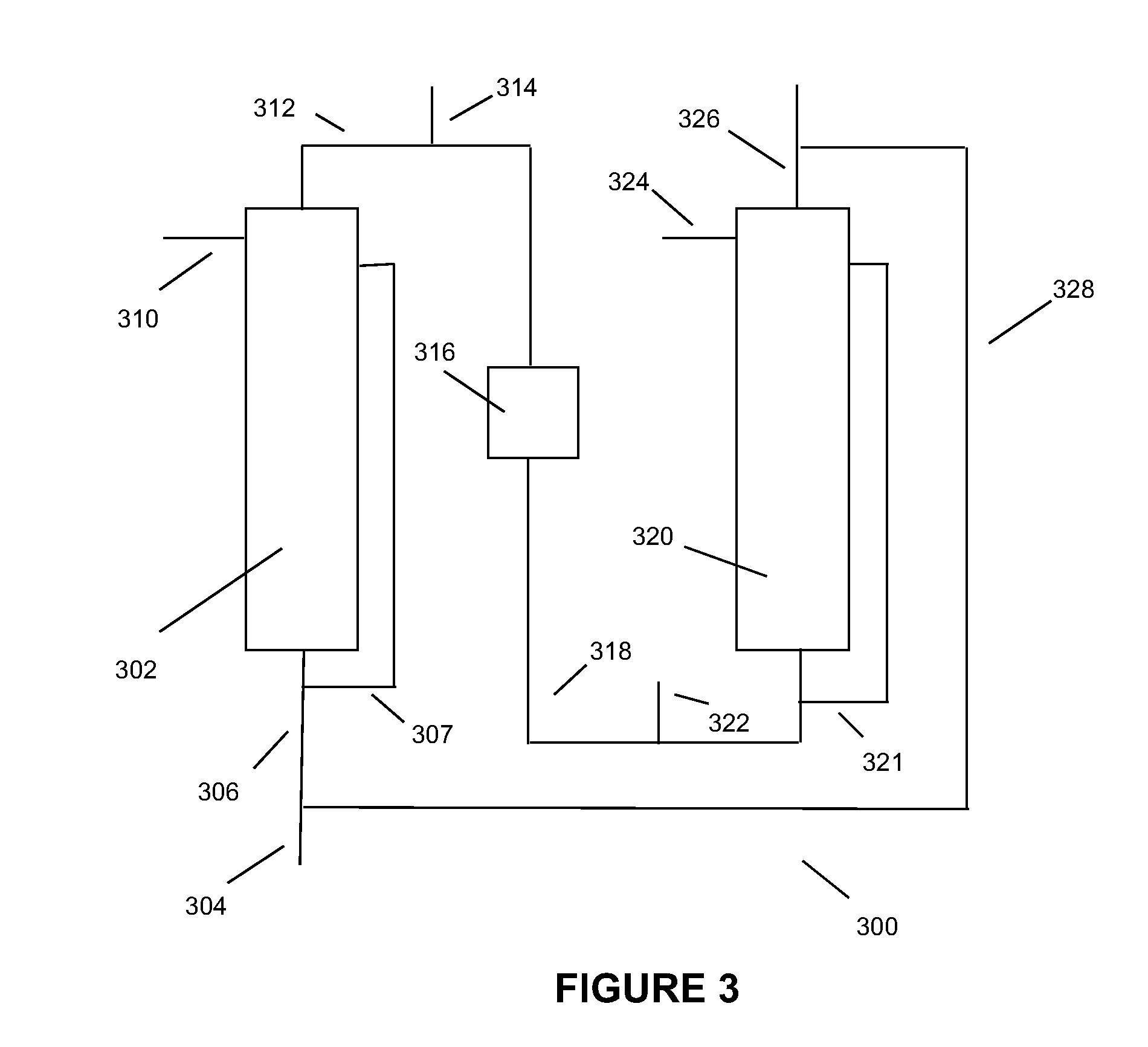Low energy, high substrate efficiency, anaerobic, deep, bubble column fermentation processes
a technology of high substrate efficiency and low energy consumption, applied in the field of low energy, high substrate efficiency, anaerobic, deep, bubble column fermentation processes, can solve the problems of high carbon monoxide conversion rate. , the effect of minimizing the risk of carbon monoxide inhibition
- Summary
- Abstract
- Description
- Claims
- Application Information
AI Technical Summary
Benefits of technology
Problems solved by technology
Method used
Image
Examples
Embodiment Construction
Definitions
[0048]Oxygenated organic compound means one or more organic compounds containing two to six carbon atoms selected from the group of aliphatic carboxylic acids and salts, alkanols and alkoxide salts, and aldehydes. Often oxygenated organic compound is a mixture of organic compounds produced by the microorganisms contained in the aqueous menstruum.
[0049]Carbon monoxide inhibition means that microorganisms are adversely affected by a high concentration of dissolved carbon monoxide in the aqueous menstruum resulting in a significantly reduced, e.g., reduced by at least 15 percent, conversion of carbon monoxide or hydrogen per gram of active cells per liter, all other conditions remaining the same. The inhibitory effect may occur in a localized region in the aqueous menstruum; however, the occurrence of a carbon monoxide inhibition is typically observed by assessing the specific activity rate, i.e., the mass bioconsumed per mass of active microorganism per unit time, which und...
PUM
 Login to View More
Login to View More Abstract
Description
Claims
Application Information
 Login to View More
Login to View More - R&D
- Intellectual Property
- Life Sciences
- Materials
- Tech Scout
- Unparalleled Data Quality
- Higher Quality Content
- 60% Fewer Hallucinations
Browse by: Latest US Patents, China's latest patents, Technical Efficacy Thesaurus, Application Domain, Technology Topic, Popular Technical Reports.
© 2025 PatSnap. All rights reserved.Legal|Privacy policy|Modern Slavery Act Transparency Statement|Sitemap|About US| Contact US: help@patsnap.com



